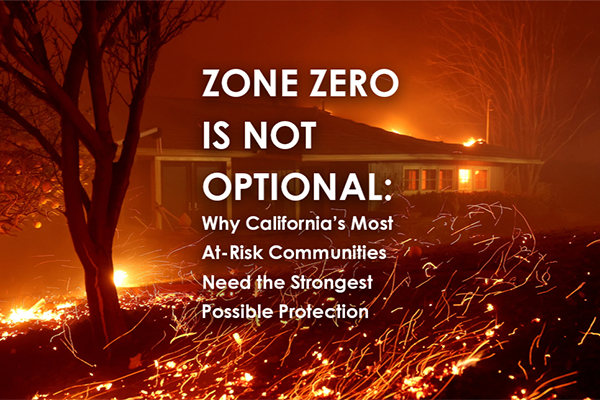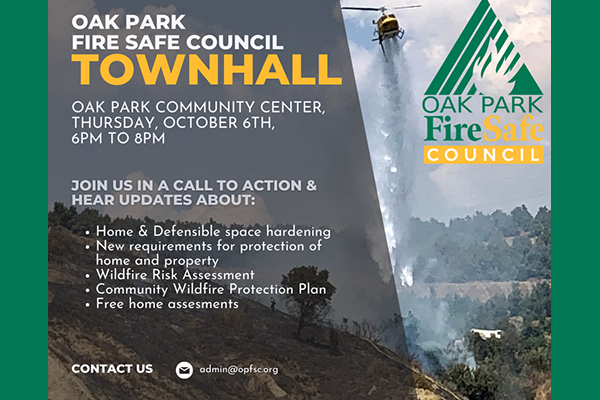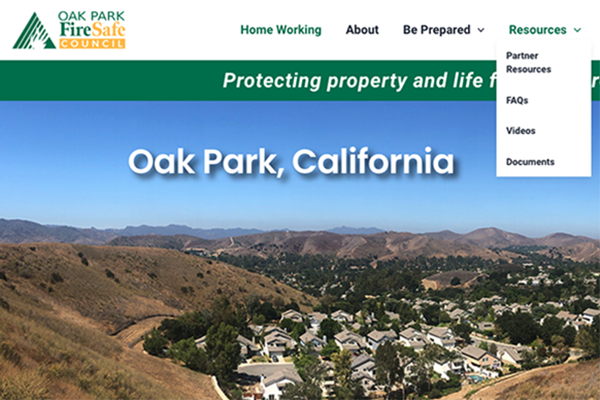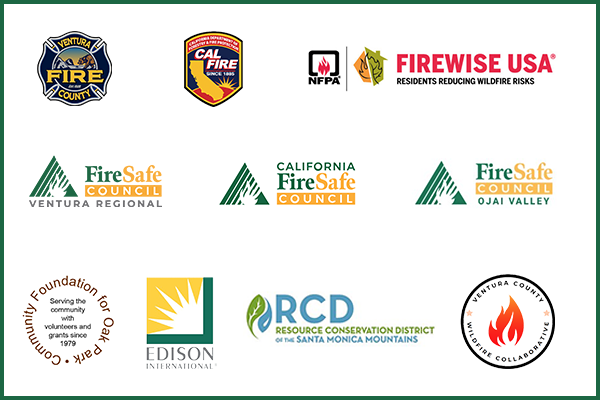By: Todd Lando
Battalion Chief, Wildfire Hazard Mitigation Specialist – Central Marin Fire Department
September 25, 2025
The debate around California’s Zone Zero regulation has reached a critical point. What began as a necessary and science-backed policy proposal has become mired in misinformation, emotional appeals, and increasingly flawed logic. Much of this confusion can be traced back to the June 2, 2025 Los Angeles Times op-ed by Max Moritz and Luca Carmignani. Their argument suggested that “lush” or “well-maintained” vegetation might offer some protective value, and warned against blanket vegetation rules in the five-foot zone adjacent to homes. Unfortunately, their commentary, however well intentioned, has been repeatedly misapplied and misunderstood. Today, a small but vocal group of opponents cite this editorial as justification to weaken or abandon what is arguably the most critical zone for home survival.
Let us be clear: Zone Zero is not about landscaping preferences. It is about whether homes survive in the face of wind-driven ember storms. It is the only defensible space zone that makes direct contact with the structure. It is where embers accumulate, where radiant heat is most dangerous, and where almost every structure first ignites.
If California fails to adopt and enforce a strong, science-based Zone Zero regulation, it will have squandered its most important opportunity to prevent future home loss.
Flawed Logic: Vegetation as Ember Protection?
A recurring argument made by opponents is that some vegetation in Zone Zero can actually protect homes by absorbing heat or catching embers. The idea is that shrubs or irrigated plants might act like buffers, blocking embers or shading walls. This sounds plausible until you examine how wildfire actually works. The anecdotal examples cited by proponents of this idea are just that: when thousands of structures burn simultaneously, single specimens may occasionally survive for unknown reasons – but more often than not it’s because an outgunned fire engine crew chose to make a stand at that particular location, not because a miracle wall of vegetation provided protection.
In wildfire science, blocking embers is not a protective feature. It is a risk. Dense vegetation near a home does act as an ember trap. Structures create wind shadows that cause embers to fall out of suspension. They collect at the base of walls, shrubs, fences, mulch beds, or furniture, in building corners, at the foundation, or under eaves. Once there, they smolder and preheat surrounding materials. If those materials are combustible, ignition may be inevitable. And we know that all plants are combustible, even those that under normal conditions were well hydrated.
Suggesting we rely on lush vegetation to catch embers is like laying a damp rug in front of the hearth and hoping it never dries out. It might resist ignition for a moment, but heat and dry air always win. And when it does, the fire starts right where it will do the most damage.
The Fatalism of Structure Separation Distance (SSD)
A newer trend among opponents is the idea that structure separation distance (SSD) is the real problem, and because we cannot move homes farther apart, all is lost. This argument sometimes ironically leans on the 2025 Zamanialaei et al. study in Nature Communications, which found SSD to be the top predictor of home loss in wildland-urban interface (WUI) fires. That finding is valid and important. But the conclusions being drawn from it are not.
Yes, SSD is a major risk factor, but that is not a reason to give up. It is exactly why Zone Zero is so important. We cannot change the layout of existing neighborhoods, but we can remove the fuels that embers use to ignite structures. The risk of closely spaced homes is real, but a clean, well-maintained Zone Zero gives embers nothing to ignite. When that space is free of receptive fuels, the fire has a chance to stop at every road, intersection, or other natural break in fuels. Zone Zero does not eliminate the risk of structure-to-structure fire spread, but it slows the domino effect, and in dense neighborhoods, that can mean the difference between isolated damage and catastrophic loss.
If you live in a tightly spaced community, Zone Zero is your first, last, and best line of defense.
Clarifying the Role of Zone Zero
Zone Zero is not the only factor that determines structure survival, but it is the first. It is the ignition zone. It works in concert with building hardening (such as ember-resistant vents and tempered glass), but it serves a unique role: it removes the receptive fuels that embers rely on to ignite structures.
Even the best-hardened structure can be overwhelmed if flammable materials are touching the building at ground level. Think mulch, planters, brooms, welcome mats, stacked firewood, or storage. Add a wooden fence that connects to the structure, and you have a horizontal fuel bridge. That is what Zone Zero is meant to interrupt.
Addressing the Tree Canopy Misconception
One of the most common and misleading arguments is that Zone Zero will result in the wholesale removal of tree canopy and urban forest cover. This is simply not true. In fact, Zone Zero barely addresses trees because so few exist in this small five-foot-wide zone to begin with. The fire community has long recognized the value of mature trees in an urban landscape, particularly their ability to provide shade, reduce temperatures, increase ground-level humidity, and contribute to neighborhood health and aesthetics. Zone Zero does not prohibit trees. It only addresses the limited number, and parts of trees, that actually threaten structures.
The reality is that very few mature native trees grow within five feet of buildings. If the bole or trunk of a large tree is that close to the foundation, the homeowner has a much bigger problem than fire. Fall hazards, storm damage risk, and root pressure on foundations are often a greater concern than fire. And we are not primarily worried about tree canopies igniting. What we are concerned with is the accumulation of leaf litter at the base of walls, on roofs, in gutters, and around vulnerable openings. That is where ignitions start.
Zone Zero includes specific exemptions for mature trees whose trunks exist within this zone. These trees can remain if they meet height, spacing, and maintenance criteria. The regulation recognizes their value and provides a practical pathway to retain them. In reality, almost every mature tree that impinges on Zone Zero to some degree will be allowed to stay. The handful of exceptions (especially species like Italian cypress, juniper, or overmature conifers) are rarely the trees that residents are fighting to protect. These species are most often non-native and are among the most flammable.
It is also worth noting that Public Resources Code 4291, the very law AB3074 and Zone Zero builds upon, has required vegetation clearance and tree spacing around homes in California for more than 60 years. Those existing defensible space rules are far broader in scope, extending up to 100 feet from structures—twenty times farther than Zone Zero. Yet in practice, this has never resulted in the widespread loss of tree canopy. Enforcement has been limited. Many have been allowed to ignore the law—often at great cost.
By contrast, the proposed Zone Zero regulation is far more modest and focused. It applies only to combustible materials within five feet of structures—a narrow strip of land where the risk of ignition is highest. In many cases, compliance requires nothing more than relocating firewood, storing tools away from walls, swapping bark mulch for gravel, trimming dead branches, or removing dense shrubs that trap dry leaf litter.
Yes, Zone Zero is more prescriptive than past rules, but it is also more targeted, effective, and scientifically justified. And in terms of area, it is remarkably limited: Zone Zero affects less than 2% of the space we’re already required to manage, yet it is the most important zone for preventing homes from igniting.
Why a Strict, Universal Rule Is Needed
Critics often argue that vegetation in Zone Zero should be allowed if it is “well maintained,” “lush,” or “irrigated.” But these are subjective and unenforceable standards. Inspectors cannot reliably assess the moisture content of plants during a brief visit every year or two, nor can they determine whether a shrub was watered yesterday, last week, or not at all. Appearances are deceiving—even healthy-looking vegetation can become highly flammable during red flag wind events, when humidity drops and atmospheric demand pulls moisture from leaves faster than roots can replenish it. In many California communities, irrigation is already limited—either due to persistent drought and water scarcity, or because the cost of irrigation water is prohibitively high.
Subjective rules create disputes and inequities. Objective rules create safety. The five-foot buffer must be clear, enforceable, and universal.
Long-Term Mitigations for Dense Communities
For communities with tight SSD, Zone Zero is only one part of the solution. Another promising strategy involves non-combustible fencing. Steel or heavy-gauge aluminum fences not only reduce the risk of direct ignition, they also reflect radiant heat from neighboring structures and block ember transport with a noncombustible barrier. These fences are longer-lasting than wood, recyclable, and aesthetically adaptable. In neighborhoods where fences already connect buildings, upgrading to fire-hardened materials could provide meaningful reductions in structure-to-structure fire spread.
Over time, zoning updates and incentive programs could help communities implement fencing transitions and design improvements that add another layer of protection to homes that cannot physically move farther apart.
Conclusion: This Is the Zone We Control
- We do not control the wind. We do not control the terrain. We do not control the age or layout of our neighborhoods. But we do control what sits within five feet of our homes.
- Zone Zero is not optional. It is the most effective, most enforceable, and most essential line of defense we have.
- Let’s not let anecdote, fear, or wishful thinking undermine what science, fire experience, and reality have made abundantly clear: this zone is where the fight to save homes is won or lost.
Todd Lando – President of Fire Safe Marin; and Battalion Chief/Wildfire Hazard Mitigation Specialist for Central Marin Fire Authority
With more than 34 years in the fire service, Todd has worked on the front lines of wildfire and in the trenches of planning, education, and fire science. His focus is on helping communities adapt to wildfire through defensible space, home hardening, fuel mitigation, and honest, evidence-based communication. He coined the term “Zone Zero” to describe the well documented science and field experience around the five feet that matter most—and he’s still working to make sure people understand why that zone can make the difference between survival and loss.




